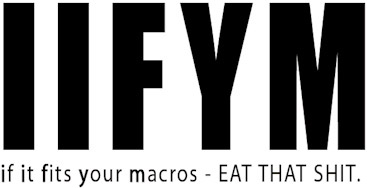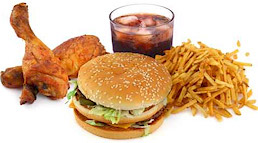IS THE “IIFYM DIET” LEGIT? (IF IT FITS YOUR MACROS)

The concept of IIFYM or “if it fits your macros” has been spreading like wildfire through the online bodybuilding community over the past couple of years.
This has led to huge debates on discussion forums, chatrooms and YouTube videos between proponents of “clean eating” and those who side with IIFYM.
The “clean eaters” typically point the finger at IIFYM’ers as being lazy and unmotivated, while the IIFYM’ers accuse the clean eaters of being uninformed “bro scientists” with a poor understanding of nutrition.
At the end of the day, there isn’t really much to argue here.
IIFYM is actually not a “diet” or a specific nutrition protocol. All IIFYM really means is this…
As long as your overall macronutrient totals (protein, carbohydrates and fats) as well as your micronutrient needs (vitamins, minerals, antioxidants etc.) are being met for the day, it doesn’t matter which specific foods you consume in order to meet those totals.
That’s it. That’s all “if it fits your macros” really means. (I actually think it would be more accurate and cause less confusion if it was called “if it fits your macros AND your micros”, but I digress)
At the end of the day, there’s no real way to argue against this.
Your body does NOT view your nutrient intake within the context of individual food items.
1 chicken breast, 1 cup of rice and 1 bowl of Fruit Loops are not seen as separate entities. The body can’t say “that’s a chicken breast”, “that’s rice”, “those are Fruit Loops”. In addition, it doesn’t say “those first 2 items are healthy” and “that last item is unhealthy”.

What does the body actually recognize? 468 calories, 36 grams of protein (broken down into individual amino acids), 70 grams of carbs, 6 grams of fat (broken down into individual fatty acids) as well as an assortment of fiber and micronutrients all mixed together in a giant blob of chewed up goo.
The truth is that bodybuilding nutrition is really just a numbers game.
As part of a diet designed to support muscle growth and overall health, you have specific daily macronutrient and micronutrient needs in order to achieve optimal results. Your goal is to meet those numbers at the end of the day, period.
As long as the total “mixture” of food that you consume throughout that day meets those numbers, it really makes no difference at all what those exact food items are.
I’m sure some of you reading this are shaking your head by now because you think I’m saying that it’s possible to eat nothing but pizza, burgers and ice cream and still maximize your results.

That is definitely NOT what I’m saying, nor is it what people who actually understand IIFYM are saying.
Even those who follow the overall “philosophy” of IIFYM (if that’s what you want to call it) still get the majority of their food intake from traditional “clean” bodybuilding foods such as chicken breast, rice and vegetables.
Why?
Because the diet still has to meet your macros AND your micros and it is NOT possible to meet those totals by eating large amounts of “junk” food.
It’s not possible to eat pizza and burgers all day without over-shooting your fat totals.
It’s not possible to pig out on ice cream and 7-up and still meet your fiber/vitamin/mineral requirements.
It’s not possible to eat low quality protein all day and still obtain the proper amino acids needed for maximizing protein synthesis.
Those who stand behind IIFYM still consume a diet mostly comprised of “healthy” bodybuilding foods since that’s the only way to actually get your macronutrient and micronutrient totals met in the first place.
Beyond simply looking at grams of protein, carbs and fats, there are other important dietary needs that need to be met…
– You need high quality proteins with favorable amino acid profiles and high bio-availability that optimally support muscle growth.
– You need a certain amount of fiber each day.
– You need adequate intake of vitamins, minerals, antioxidants, phytonutrients and essential fatty acids.
The only way to get all of these needs met is to have the bulk of your diet coming from lean, high quality proteins, minimally refined carbohydrates, fruits/veggies and foods high in poly and monounsaturated fats.

So whether you’re a 24/7 clean eating “bro” or an IIFYM’er, you’ll still be following a pretty similar diet.
The only real difference between the two is that proponents of IIFYM usually allow a small percentage of their total daily calories (typically 10-20%) to come from “junk foods” by fitting them into their daily totals. Whether they realize it or not, this is the only real disagreement between the “bros” and the IIFYM followers.
For example, if your daily calorie intake was 3500, then 350-700 of those calories could be derived from any foods you want as long as they fit into your macronutrient totals. (This is really where the term “If It Fits Your Macros” is derived from)
To give a specific example, if your daily carbohydrate intake was set at 325 grams, and 260 of those (80% of the total amount) is being derived from minimally refined, high fibers sources like oatmeal, sweet potatoes, blueberries and broccoli, the remaining 65 grams can be derived from any carb source you’d like.
Whether it’s cookies, corn pops or frozen yogurt, the remaining 65 grams is totally up to you.

When you really examine the issue closely, it’s pretty hard to argue that this would be counterproductive to your results in any noticeable way.
A few reasons…
Reason #1
As I stated earlier, the body does not view your nutrient intake within the context of individual food items. There is no such thing as a food that is inherently “good” or “bad”; there is only a complete, overall diet that is “good” or “bad”.
Reason #2
10-20% only represents a small chunk of your overall diet. Having 80% of your food intake derived from high quality proteins, minimally refined carbs and healthy fats is easily enough to meet your fiber and micronutrient needs for the day.
Reason #3
So-called “junk foods” still contain perfectly usable protein, carbohydrates, fats and even vitamins/minerals. It’s not that eating “junk foods” is bad; it’s that eating too many of them is usually bad.
For example, you cannot possibly say that “cheeseburgers make you fat”. You can only say that “too many cheeseburgers makes you fat”. It’s not the cheeseburger itself that is bad; it’s the excessive quantity.
Within the context of your entire diet, you could argue that the term “junk food” doesn’t even have any practical application when we’re dealing with a small number like 10-20%.
Reason #4
Most traditional bodybuilders allow for a cheat day once a week anyway, and this has always been considered a perfectly acceptable practice. The only difference is that those following IIFYM typically consume a small amount of cheat foods every day as opposed to a large amount of cheat foods once a week.
In actuality, having a full on cheat day once a week could be viewed as being potentially more harmful. That’s because many people simply binge out without counting anything, while those who follow IIFYM track everything to make sure that they don’t exceed their daily calorie totals.

So when it all comes down to it, not only is IIFYM (or “flexible dieting” as it is referred to by some) NOT going to have any noticeable negative effects on your results, but it provides huge benefits.
While everyone else revolves their day around tuna and broccoli, you can allot 10-20% of your calories to anything you want and still achieve the same results.
It gives you a chance to actually enjoy your diet rather than slaving away to the same boring foods 24 hours a day while still achieving the same results.
Actually, you’ll probably get even better results since this type of nutritional approach is a lot easier to stick with over the long haul.
Sounds good right? It is, but let me make this clear:
If you want to utilize this approach with success, you have to actually track your macros!
This isn’t a free pass to start aimlessly shoving twinkies and donuts down your throat. The entire point of IIFYM is that you can consume these foods if it fits your macros. If you aren’t tracking your diet then you’re missing the whole point.
Some people point the finger at IIFYM’ers by saying that they’re lazy and lack discipline. If anything, IIFYM requires MORE work and discipline than a standard bodybuilding diet since you actually have to track the specific foods, calories and macronutrients that you’re consuming.
But as long as you know what your daily needs are, what is in the foods you’re eating, and how they fit into your daily goals, IIFYM or “if it fits your macros” is a perfectly legit concept that you can employ to get into killer shape while enjoying your diet at the same time.
If you found this article helpful, make sure to sign up for your FREE custom fitness plan below...




